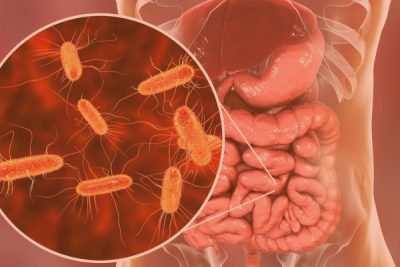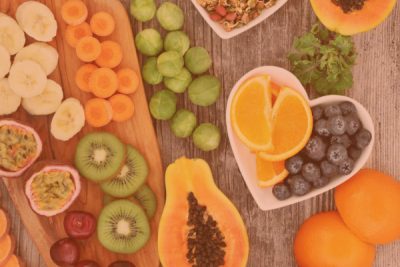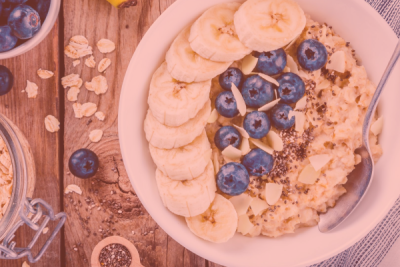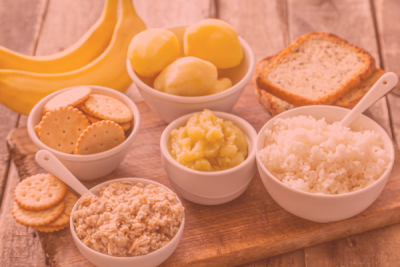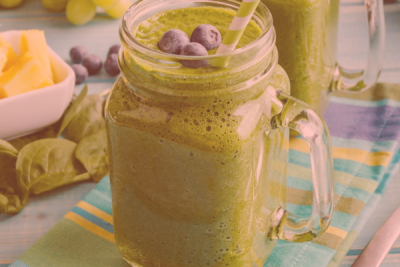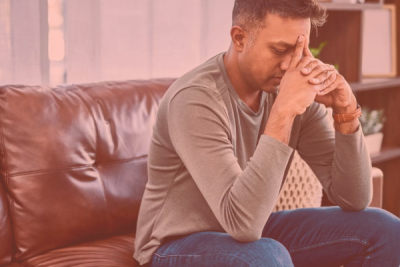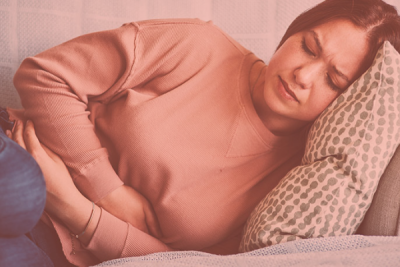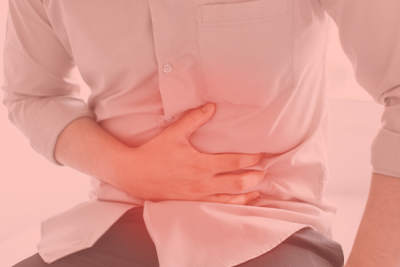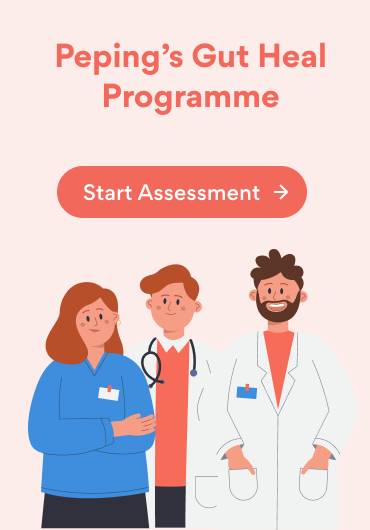What is bloating?
Bloating happens when the stomach feels full and tight, possibly due to gas buildup.
The 5 signs that indicate bloating are –
- Swollen or distended abdomen
- Feeling full or tight in the stomach area
- Excessive gas or flatulence
- Abdominal pain or discomfort
- Belching or burping frequently
What are the biggest causes of bloating?
Bloating is something that can be triggered due to various reasons –
- Muscle Spasms – When the muscles in the colon contract stronger than normal it results in pain, bloating and gastritis
- Stress – When the nerve endings in the gut become more sensitive even a small amount of gas which is easily tolerable also creates bloating in the stomach
- Food triggers – Certain food can trigger bloating in the stomach. Many food items which are rich in alpha-galactosidase which escape digestion are fermented in the gut releasing gas and causing bloating
Let’s look at food which can generally cause bloating –
- Beans – A lot of you would have felt it as well, beans are a major cause of bloating. Beans have a high fibre content and contain oligosaccharides. The body finds this food tough to break down. A lot of it then is fermented in the gut causing bloating and gas. Beans also contain a compound called Raffinose. Raffinose is a non-digestible carbohydrate and is also fermented by gut bacteria causing bloating. One way to eat beans is by soaking them. Soaking and cooking reduces the amount of raffinose and the beans are relatively easier to digest. Over-the-counter products that have alpha-galactosidase can break down the high fibre and relieve gas
- Dairy Products – Lactose intolerance is on the rise. Lactase enzyme is much needed to break down the milk sugar. In some people, the product of this enzyme is extremely low and they develop intolerance towards lactose. When the lactose in the food moves to the colon undigested, the interaction of the gut bacteria causes these symptoms.
- Wheat – Gluten sensitivity is also contributing towards bloating in a lot of people today. Gluten can be removed from the diet and then after a few months include in very small quantities to see the body’s response to it.
- Cruciferous vegetables – Vegetables like cauliflower, broccoli, and cabbage have sulfur and can cause bloating and gas
- Fructose-rich fruits – Fruits such as apples, and watermelon have high fructose. This can accelerate bloating at times. Replace these with pineapple, blueberry, and strawberry instead
- Packed foods – Sweetened packed products are a big cause of bloating. These sweetened products have extremely high amounts of fructose which is tough to digest. Foods like candy, ketchup, soft drinks, and juices all could cause bloating.
While bloating can often go away on its own, persistent symptoms should be addressed by a gastroenterologist. At Peping we provide a holistic solution to this consisting with the help of gastroenterologists, nutritionists, psychologists and care navigators.
How can bloating be tackled?
A holistic approach to treating gastric problems encompasses several key aspects, including proper diagnosis, nutrition, exercise, and stress management. Let’s explore each of these components in detail to understand how they can contribute to permanent relief.
1. Diagnosis
Diagnosing the root cause of chronic bloating is crucial for developing an effective treatment plan. The first step is to consult a gastroenterologist who specializes in digestive care. A deep diagnosis of the case is a must. The gastroenterologist will conduct a thorough medical history review, and physical examination, and may order diagnostic tests such as endoscopy, imaging studies, or laboratory tests to identify any underlying conditions or triggers for your gastric problems. Understanding the specific factors contributing to your symptoms will enable targeted treatment and management strategies.
2. Nutrition

Proper nutrition plays a vital role in managing and preventing gastric problems. It involves two essential aspects: identifying trigger foods and incorporating healthy dietary choices.
Identification of trigger foods: Certain foods can exacerbate gastric symptoms in individuals. Common trigger foods include spicy or greasy foods, caffeine, carbonated beverages, alcohol, and high-fat foods. By identifying and avoiding these trigger foods, you can reduce the frequency and intensity of your symptoms. A lot of people are intolerant towards beans, while some cannot digest lentils. Many people are lactose intolerant, and many might be reacting badly to tea coffee. It is imperative to understand the trigger food for one’s self and then eliminate it from the diet.
Addition of healthy foods: Incorporating a well-balanced diet rich in fibre, fruits, vegetables, whole grains, lean proteins, and probiotic-rich foods can promote digestive health. These foods help regulate bowel movements, promote the growth of beneficial gut bacteria, and provide essential nutrients for optimal gut function. Additionally, staying adequately hydrated is important for maintaining digestive regularity.
Top 5 foods to help you ease bloating –
- Ginger – Ginger has carminative effect. It decreases pressure on lower esophageal sphincter, reduces intestinal cramping and prevents dyspepsia, flatulence and bloating. It also stimulates body’s digestive enzymes (Reference).
- Turmeric – Turmeric has anti-inflammatory properties. It also helps gallbladder to produce bile while also helping in easing bloating, indigestion and gas
- Peppermint – Peppermint has anti-spasmodic properties. It can relax the muscles in the colon which are otherwise contracting hard when the bloating happens. This also helps the gas push through and the bloat is relieved. Peppermint can be consumed in tea form or capsule form.
- Bananas – Bananas are a good source of probacteria. They help in calming the extra gas created in the stomach.
- Fennel – Fennel seeds have very high anti-inflammatory properties. They have anti-spasmodic properties as well and relax muscles enabling the gas to pass through. They also soothe the irritation in the intestines.
You can also read about foods that can be added to a healthy diet
It’s advisable to consult a registered dietitian who can provide personalized dietary recommendations based on your specific needs and sensitivities.
3. Exercise

Regular exercise is beneficial for overall health and can positively impact gut function. Engaging in physical activity helps stimulate digestion, improves bowel movements, and reduces stress levels. Gas is created when the gut bacteria ferment the food which is not digested by the digestive system. In this process of fermentation, gas is released and sometimes trapped in the colon.
Yoga has been shown to promote digestion, relieve bloating, and reduce stress levels, all of which contribute to better gut health. Some beneficial yoga poses include
Balasana
- Step 1 – Sit on your heels and then touch your toes to each other. Separate your knees to hip-width apart.
- Step 2 – Exhale and place your upper body in between your thighs
- Step 3 – Lay your hands down and stretch your arms with plans facing up
- Step 4 – Push your shoulders towards the ground
Anand Balasana
- Step 1 – Lie flat on your back with knees bent and feet on the floor
- Step 2 – Pull your feet up with your hands with bent knees making a right angle with the floor
- Step 3 – Grab your feet and pull the knees closer to the ground and if comfortable you can rock from side to side
Pawanmuktasan
- Step 1 – Lie flat on your back with knees bent and feet on the floor
- Step 2 – Lift your legs up with bent knees and bring them closer to the stomach
- Step 3 – Bring your arms around your legs
- Step 4 – Now move your neck towards your chest while bringing your legs with bent knees closer to the chest as well
Supta Matseyndrasan
- Step 1 – Lie flat on your back with legs extended
- Step 2 – Pull your right know on your chest while keeping the left leg as it is
- Step 3 – Now get the right knee to cross the chest and place it on your left side with the knee touching the floors
- Step 4 – Place the right arm on the right side and turn your head to look over the right arm
- Step 5 – Keep in this position for 5 minutes
Anjaneyasana
- Step 1 – Come in plank position and from here keep both knees on the floor
- Step 2 – Take the right leg forward and look up in front of you with the left knee still touching the ground
- Step 3 – Place your palms on the right thigh and widen the stance as much as you can
- Step 4 – Keep in this position for around 5 minutes
Walking and cardio
Engaging in regular cardiovascular exercises, such as brisk walking, jogging, or cycling, can improve overall gut motility and reduce symptoms of constipation. Aim for at least 30 minutes of moderate-intensity aerobic activity most days of the week.
Incorporating both yoga and cardio exercises into your routine can contribute to better gut health and overall well-being.
4. Stress Management
Stress can significantly impact gut health and exacerbate gastric problems. There is a strong connection between the brain and the gut, often referred to as the gut-brain axis. Any change in the gut-brain connection can cause massive changes in the digestive processes.
Bloating can a lot many times be triggered by the stress that we take. Under stress, our limbic system becomes activated which eventually leads to the release of cortisol. Within the gut, cortisols have negative impacts that lead to bloating.
A strong correlation has been found where incrementing stress has led to a higher symptom flare-up. Managing stress levels is crucial for achieving long-term relief from bloating
Quick remedies for bloating
Reducing bloating is more of a long-term thing than a quick fix, however, there are certain things that you can try immediately to resolve bloating.
- Go for a walk – Walking has been considered a great relief exercise. Walking gets you moving and is known to relieve gas as well.
- Sit in an upright position – If you are immediately lying down after eating it is meant to cause bloating, so try to sit in an upright position
- Yoga – Sitting in squat position, diamond pose or vajrasan can help in relieving gas
Tips to avoid bloating at night?
- Have a light dinner – A heavy meal takes more time to digest and leads to bloating. Heartburn caused can disturb sleep as well
- Eating early – The typical time frame between sleep and dinner should be atleast 3 hours. A late dinner leaves very minimum time to digest.
- Lying down after eating – At night, people are in an exhausted state and tend to lie down after eating while engaging in content. Immediately lying down causes bloating
- Not going for a night walk – Asmall post meal walk can help in easing out the digestion process



